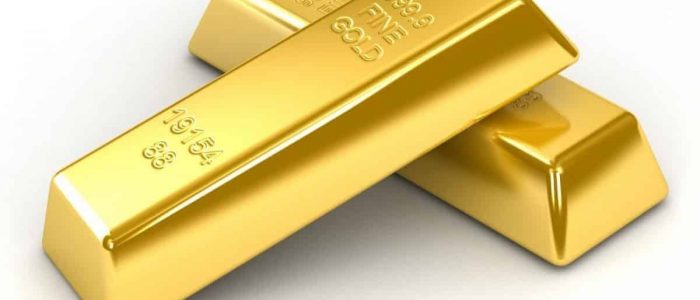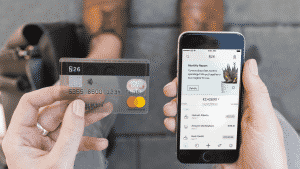Do you have an object that seems valuable but you want to verify without any doubt that it is real gold? Is there a 100 % reliable method to know if a jewel is gold or if it is just an imitation? What is the ultimate test to know if it is real gold?
Gold is the precious metal par excellence that has fascinated thousands of people throughout history.
Such has been the power that this precious metal that society has for centuries dictating the course of the world economy through gold, resulting in a deep desire to possess it that, even today, translates as one of the great ambitions of being. human to generate wealth.
We all have a clear image of what that bright chemical element with the symbol Au -from Latin «aurum«- and with atomic number 79 in the periodic table, but surely what you are interested in knowing is only if an object you have is made of real gold.
What is gold, really?
In its purest form, gold is a very bright, dense, soft, malleable and ductile metal with a very bright yellowish color that appears naturally on most occasions, so it is common to find it in the form of nuggets or grains. be present in rocks or river deposits.
Perhaps you have a piece of jewelry or an object and you are wondering if it is made of real gold but you do not know what to do to verify it reliably.
The reality is that gold is so particular that differentiating it from other materials is really easy given its peculiarities.
We tell you the different ways that exist to check it in a simple and fast way that will reveal, without a doubt, if your object is real gold.
You will learn to know if something is real gold and you will become an expert capable of detecting very easily if something is gold or, if instead, you are faced with a fake.
Many people do not know how to identify gold correctly and spend their lives thinking that they have some gold when in fact it is not or suddenly they find themselves with some jewel or piece that appears to be, but how do you know if it is genuine gold without place for mistakes?
Why is it good news that it is real gold?
If I am in front of a piece of real gold, I must tell you that it is possible that you have something with a high value in your hands. However, you should know if it is real gold and how many carats is its purity, which will be what truly determines its value in the market.
Selling gold is currently one of the star investments since it is a highly desired object whose value does not seem to fall.
Depending on its size and purity, selling gold is a very profitable operation with the guarantee of being something with a demand always ready to pay for it.
7 effective ways to tell if something is real gold
Although the easiest way may be to consult a jeweler, you may not have time to go to a jewelry store or you simply do not feel like going, so fortunately there are some methods that will help you detect and discover for yourself if an object is gold in seconds.
Here are the most effective ways to check for gold that anyone can easily carry out before visiting a jeweler for a verdict.
Take a visual exam
You can start to check if your gold is real by doing a first visual inspection. You should focus on finding the characteristic signs that differentiate gold from a vulgar counterfeit.
The objective of this visual examination is to find a label that indicates the purity or carats of the jewel in question. A magnifying glass or magnifying glass will help you in this task.
Although it is possible that if the piece is very old it no longer has any visible mark or mark. And it is also possible that some pieces include marks that ensure their authenticity, even if they are forgeries. That is why it is important to carry out a more thorough examination to see if the object is made of gold.
Notice the discoloration of the object
To check if something is gold we can look at the areas that have lost their color. These discolored parts are usually located on the edges, since they are the parts most exposed to rubbing or friction.
If you see that there are parts that have stopped being golden, it is more than likely that your jewel has simply been plated in gold and that it is not real gold.
Consider running the bite test
It is the most typical and perhaps the one we have all seen in thousands of movies.
To check if your item is real gold using the bite test, you must do the following:
- Bite down on the object with moderate pressure.
- Examine the markings. Usually, real gold will show the indentations of your teeth, and its depth indicates its purity.
Although it is not the most recommended way to check if it is gold, since in addition to the possible damage, there are other materials that, when bitten, leave similar marks, so you may believe that your object is gold when in fact it simply has been bathed in gold, perhaps it will serve you in some circumstance where you do not mind altering the object.
Take the exam with magnets
Using images to check if an object is real gold can be as easy as it is effective.
A small magnet may not be effective for you, but a stronger one can be very helpful in determining whether your gold is real. You can find magnets with greater strength in some pieces of hardware, so you can reuse a component of some old equipment or ask in a store specialized in computer products.
Gold is not a magnetic material, so if when you bring the magnet closer to your jewel, it stays stuck, you may find an object that is not made of real gold.
Try to perform the density test
The density of pure 24K gold is around 19.3g / ml, which makes it denser than most other metals. Few metals are denser than gold.
Measuring the density of your objects can help you determine if your gold is real. The rule is simple: the higher the density, the higher its purity.
For the most reliable results, make sure the item does not have any gemstones or anything added to it.
To check the density of your object, the first thing you should do is weigh it. Normally, you can do it easily without any cost in a jewelry store. You will need to know the weight in grams.
Put some water in a container. If possible, use a container with measuring marks. It is recommended that it allows you to measure millimeters.
The amount of water does not matter, but do not fill it to the brim since the logical thing is that the liquid overflows when introducing the gold in it.
We must introduce the object into the water and pay attention to the difference in millimeters between before and after submerging the jewel.
The formula is very simple:
Density = Mass / Volume displaced
If the result is close to 19 g / ml, it means that you are looking at real gold.
Let's see it with an example:
If we have an object that weighs about 40 grams and displaces 3 millimeters of water, using the formula we have:
40 / 3 = 13.33
That is, the density is 13.33. Now, we must take into account the different purity that gold can have:
| Carats | Composition | % gold |
| 24k | 24 parts gold | 99,9% |
| 22k | 22 parts gold, 2 parts other * | 91,6% |
| 18k | 18 parts gold, 6 parts other * | 75% |
| 14k | 14 parts gold, 10 parts other * | 58,3% |
| 10k | 10 parts gold, 14 parts other * | 41,% |
* Alloy of metals such as copper, nickel or silver
The different purity of gold has a different g / ml ratio.
- 14K: 12.9 to 14.6 g / ml
- 18K yellow: 15.2 to 15.9 g / ml
- 18K white: 14.7 to 16.9 g / ml
- 22K: 17.7 to 17.8 g / ml
Carry out the ceramic plate test
If you're looking for a quick way to check if something is gold, you can do it using a ceramic plate. It is very important that the plate you use is not enameled.
If when rubbing your jewel on the plate some black lines appear, it means that your object is not made of gold. However, if these lines are gold it means that you are facing genuine gold.
Complete the nitric acid test
This is an extraordinary way to check if your jewel is made of gold. Perhaps the hardest thing about this method is getting nitric acid. In addition, the risks involved in handling it, perhaps it is more advisable to request this examination from a jeweler.
To carry out this check we must place the object to be examined in a small stainless steel container. Add a drop of nitric acid to the object and wait to see how it reacts:
- If it turns green, it means that the object is either made of a metal other than gold, or it is simply gold-plated.
- If the reaction is gold, it means that the item is made of brass and gold-plated.
- If, on the other hand, the color it takes is white, it may mean that your jewel is made of sterling silver and bathed in gold.
- If there is no reaction, you are most likely looking at real gold.



